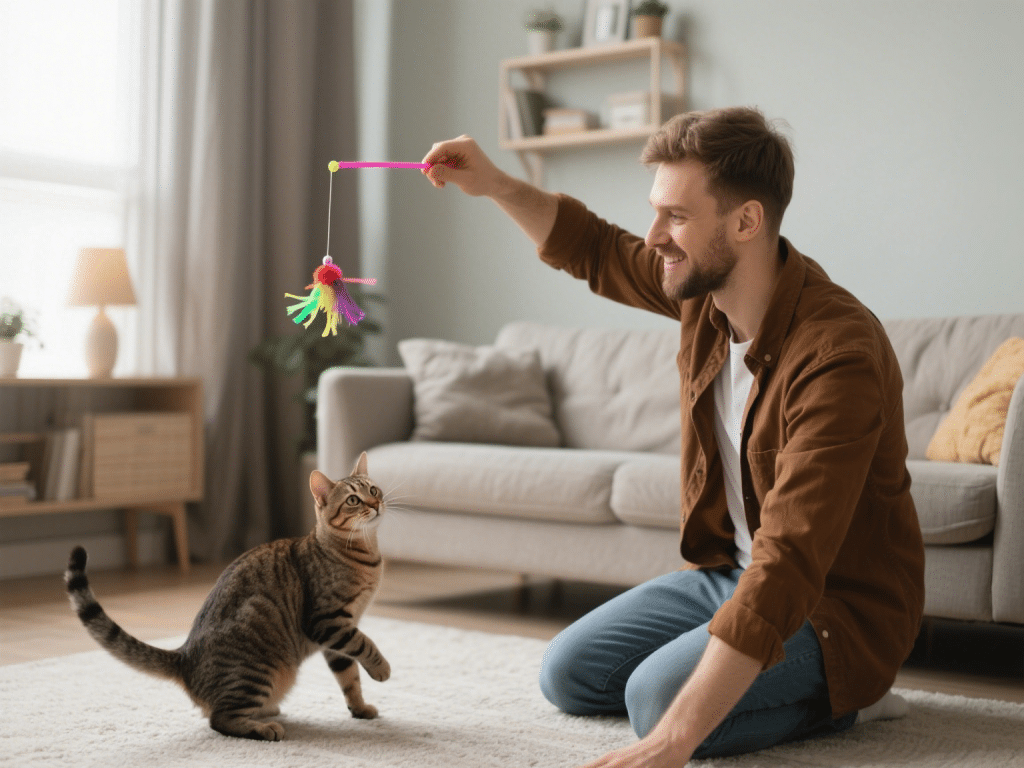
Calming Techniques for Nervous Rabbits: From Handling to Habitat
In my decade of rabbit rescue and fostering, I’ve met countless shy or fearful bunnies w...

Cats instinctively hide pain to avoid appearing vulnerable, making discomfort challenging to spot. Over fifteen years as a feline veterinary technician, I’ve learned to look for subtle behavioral and physical cues that signal underlying pain—so you can seek timely care. This guide equips you with the expertise to detect early warning signs, differentiate normal aging from pathology, and partner with your veterinarian for proper diagnosis and relief.
Reduced Activity: Less play, reluctance to jump or climb.
Changes in Grooming: Over‑grooming a sore area or neglecting coat maintenance.
Altered Posture: Hunched back, stiff gait, or holding limbs close.
Social Withdrawal: Hiding more than usual or reduced interaction.
Vocal Changes: Low, plaintive meows when touched or moved.
Facial Expressions: Squinted eyes, flattened ears, or tense whiskers.
Appetite Shifts: Reduced interest in food or difficulty chewing may indicate dental pain.
Use a simple scale of 0–5 (0 = normal, 5 = extreme pain) observing posture, mobility, and vocalization. Keeping a pain diary with photos or videos helps your veterinarian accurately assess progression.
Soft Bedding: Orthopedic beds relieve pressure on joints.
Easy Access: Provide low‑entry litter boxes, ramps to favorite spots, and food/water within reach.
Warmth: Gentle heat pads soothe arthritic muscles—ensure temperature is safe and supervised.
Exams & Imaging: Physical exam, X‑rays, or ultrasound to identify fractures, arthritis, or organ issues.
Pain Management: NSAIDs, gabapentin, or joint supplements (glucosamine) under veterinary guidance.
Physical Therapy: Underwater treadmill or massage therapy supports mobility and reduces stiffness.
“Monitoring day‑to‑day changes is crucial—cats don’t bounce back like dogs,” explains Dr. Sara Thompson, DVM. “Early intervention preserves quality of life.”
By recognizing these subtle signs and implementing home comfort strategies, you’ll become your cat’s best advocate—ensuring prompt relief and a happier, more comfortable life.

In my decade of rabbit rescue and fostering, I’ve met countless shy or fearful bunnies w...

I’m a certified canine groomer with over 12 years specializing in Nordic and double-coat...

IntroductionTraining kittens to use a litter box is a fundamental milestone for every cat ...

IntroductionIndoor cats often lack opportunities for exercise and can become overweight, l...

IntroductionEssential oils offer aromatic benefits for humans—relaxation, improved mood,...

IntroductionAs dogs age, joint health becomes a primary concern. Osteoarthritis and reduce...
Comments on "Detecting Pain in Cats: Subtle Signs Every Owner Should Know" :